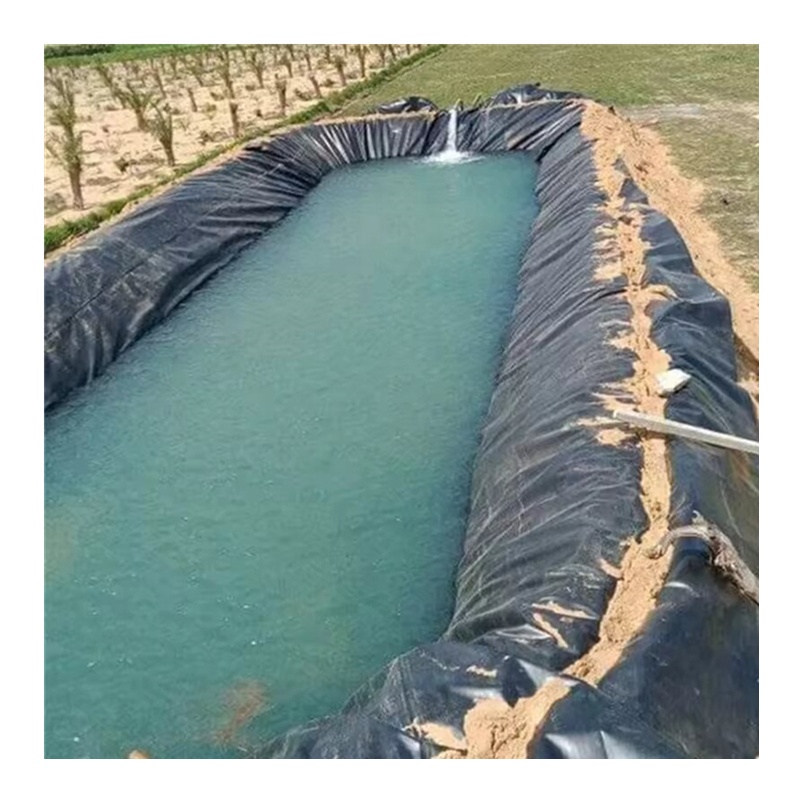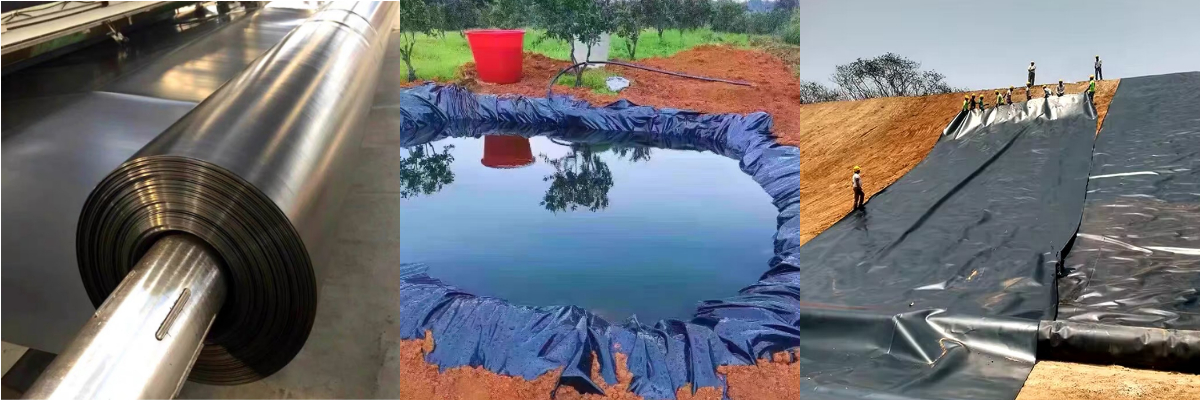0.75mm HDPE Geomembrane Pond Liner
Excellent Puncture Resistance
The 0.75mm thickness effectively resists punctures from sharp objects (e.g., rocks, roots), minimizing leakage risks—ideal for sites with complex geological conditions or rough construction environments.Superior Anti-Seepage Performance
High-density polyethylene (HDPE) or similar materials, combined with this moderate thickness, ensure long-term seepage prevention under high water pressure, reducing water waste or pollutant leakage.Strong Chemical Resistance
Withstands corrosion from acids, alkalis, salts, oils, and other chemicals, making it suitable for agricultural irrigation ponds, industrial wastewater tanks, and other corrosive environments.
0.75mm HDPE Geomembrane Pond Liner: A Comprehensive Guide
Introduction
Geomembranes are synthetic liners used for containment and environmental protection across industries. Among these, 0.75mm HDPE (High-Density Polyethylene) geomembrane pond liners have emerged as a versatile solution for applications requiring durability, cost-efficiency, and reliability. This article explores the technical specifications, advantages, applications, and environmental benefits of 0.75mm HDPE geomembranes, supported by a data table and real-world use cases.
What is a 0.75mm HDPE Geomembrane Pond Liner?
A 0.75mm HDPE geomembrane is a flexible, impermeable membrane manufactured from high-density polyethylene resin. It is engineered to create a watertight barrier in ponds, reservoirs, landfills, and other containment systems. The 0.75mm thickness strikes a balance between cost-effectiveness and performance, making it suitable for moderate-to-high-stress environments.
Key Features:
Material: HDPE (food-grade or industrial-grade options available).
Thickness: 0.75mm (750 microns).
Texture: Smooth or textured surface for enhanced friction.
UV Resistance: Additives for prolonged outdoor exposure.
6 Key Advantages of 0.75mm HDPE Geomembranes
1. Superior Puncture Resistance
The 0.75mm thickness provides robust resistance to sharp objects (e.g., rocks, roots, or debris). Laboratory tests show that HDPE geomembranes can withstand puncture forces of up to 300 Newtons (ASTM D4833 standard), reducing the risk of leaks in rugged terrains.
2. Exceptional Anti-Seepage Performance
With a permeability coefficient of <1×10⁻¹³ cm/s, 0.75mm HDPE liners effectively prevent water or chemical leakage. This makes them ideal for applications like drinking water reservoirs, where contamination must be minimized.
3. Chemical and Corrosion Resistance
HDPE is inert to acids, alkalis, salts, and hydrocarbons, ensuring longevity in harsh environments. For example, in industrial wastewater ponds, 0.75mm liners resist degradation from chemicals like sulfuric acid (pH < 2) or sodium hydroxide (pH > 12).
4. Cost-Effective Solution
Compared to thicker liners (e.g., 1.0mm or 1.5mm), 0.75mm HDPE reduces material costs by 20–30% while maintaining performance. Its flexibility also simplifies installation, lowering labor expenses.
5. Weather and UV Resistance
Integrated UV stabilizers allow the liner to withstand 5–10 years of direct sunlight without cracking or embrittlement. This is critical for outdoor applications like aquaculture ponds in tropical regions.
6. Environmental Safety
Certified for contact with potable water (e.g., NSF/ANSI 61 compliance), 0.75mm HDPE liners are non-toxic and do not leach harmful substances, ensuring safety for aquatic life and humans.
Technical Specifications Table
| Parameter | Specification | Testing Standard |
Thickness | 0.75mm ± 5% | ASTM D5199 |
Material Density | 0.94–0.96 g/cm³ | ASTM D1505 |
Tensile Strength (MD/TD) | ≥17 MPa / ≥16 MPa | ASTM D6693 |
Elongation at Break | ≥600% (MD/TD) | ASTM D6693 |
Puncture Resistance | ≥300 N | ASTM D4833 |
Carbon Black Content | 2–3% | ASTM D1603 |
UV Resistance | 5,000 hours (ASTM G154) | ASTM D4355 |
Operating Temperature Range | -60°C to +80°C | Manufacturer’s specs |
Applications of 0.75mm HDPE Geomembranes
1. Agricultural Ponds
Irrigation Reservoirs: Store water for crop farming in arid regions.
Aquaculture Tanks: Line fish/shrimp ponds to prevent water seepage and maintain water quality.
2. Industrial Wastewater Treatment
Contain hazardous chemicals in mining, oil, and gas operations.
Example: A copper mine in Chile uses 0.75mm HDPE liners to prevent acid mine drainage.
3. Landfill Liners
Act as a secondary barrier in municipal solid waste landfills.
Compliance: Meets EPA and EU landfill regulations.
4. Golf Courses and Landscaping
Create decorative ponds or retain stormwater.
Example: A Dubai golf course reduced water loss by 90% using HDPE liners.
5. Potable Water Storage
FDA-approved liners for rainwater harvesting in rural communities.
Installation and Maintenance
Installation Steps:
Site Preparation: Clear debris, level the surface, and add a geotextile underlay to prevent punctures.
Welding: Use hot-wedge or extrusion welding to seal seams. Ensure a minimum overlap of 100mm.
Anchoring: Secure edges with trenching or concrete anchors.
Inspection: Conduct air pressure or vacuum tests to detect leaks.
Maintenance:
Regularly inspect for tears or debris.
Repair minor damages with HDPE patches and adhesive.
Avoid dragging sharp objects across the liner.
Environmental and Economic Benefits
Environmental Impact:
Reduces groundwater contamination by 95% in landfills.
Lowers water consumption in agriculture by up to 70%.
Cost Savings:
Initial Investment: 20–30% cheaper than concrete or clay liners.
Longevity: 10–20-year lifespan with minimal maintenance.
Conclusion
The 0.75mm HDPE geomembrane pond liner offers a sweet spot between performance and affordability, making it a go-to choice for industries prioritizing sustainability and cost-efficiency. Its resistance to punctures, chemicals, and UV exposure, coupled with ease of installation, ensures reliability in diverse applications. As environmental regulations tighten, this material will continue to play a pivotal role in sustainable infrastructure development.












